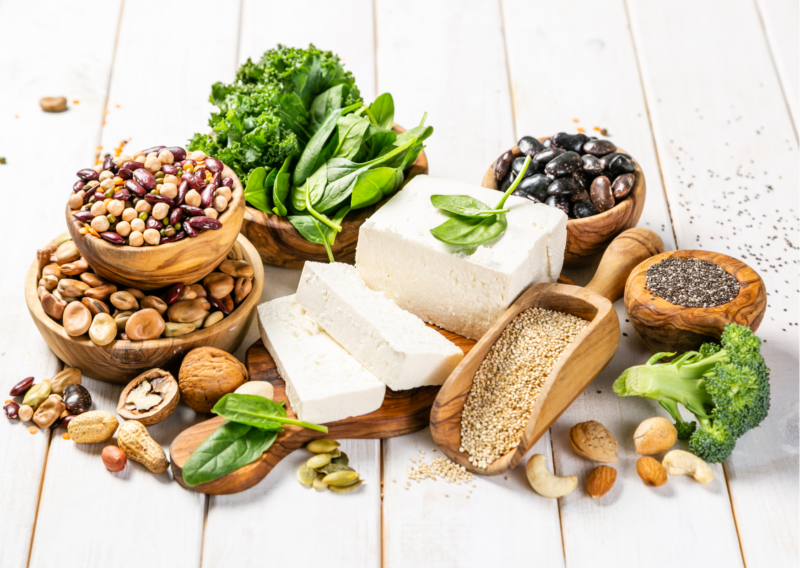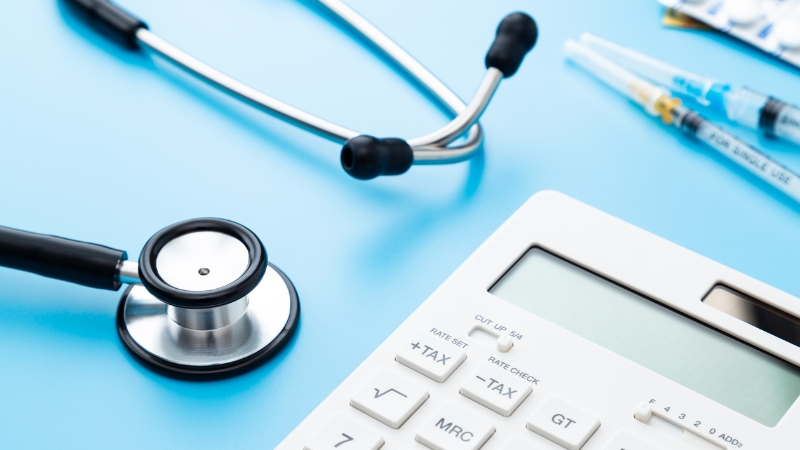Protein is essential for our bodies. It helps build muscle, hair, blood, and connective tissues, and it’s crucial for making antibodies and enzymes. Without enough protein, we simply can’t function properly. But how do you know if you’re getting enough protein in your diet?
Today, we’ll chat about how much protein adults really need and look at what some experts have to say about it.
Table of Contents
ToggleDaily needs
The Recommended Dietary Allowance (RDA) for protein is 0.8 grams per kilogram of body weight, or 0.36 grams per pound. This amount is the minimum needed to prevent sickness, not necessarily the optimal amount for everyone.
For example, a sedentary woman weighing 140 pounds would need about 53 grams of protein daily.
According to Mayo Clinic, it’s important to note that this recommendation can vary based on individual factors such as age, activity level, and overall health. The general guideline is that 10% to 35% of your daily calories should come from proteins.
For a 2,000-calorie diet, that translates to 200–700 calories from proteins, or 50–175 grams. However, certain groups, like older adults and athletes, might need more to meet their specific health and performance needs.
- Ages 40–50+: 1–1.2 grams per kilogram to prevent sarcopenia.
- Regular exercisers: 1.1–1.5 grams per kilogram.
- Weightlifters, runners, cyclists: 1.2–1.7 grams per kilogram.
- Excessive intake: More than 2 grams per kilogram daily can be harmful.
How to calculate your protein intake
For example, a 50-year-old sedentary woman weighing 140 pounds (ca. 64 kg) requires about 53 grams of protein per day. For those using the metric system, multiply your weight in kilograms by 0.8 to get your daily requirement.
Protein intake during pregnancy
Pregnancy increases the body’s protein needs. Pregnant women should aim for 75 to 100 grams of proteins daily to support fetal tissue development, placenta, breast, and blood supply. Adequate intake during pregnancy is essential for the healthy growth and development of the baby, as well as the overall health of the mother.
Protein also helps maintain proper blood glucose levels, which can reduce the risk of gestational diabetes.
Protein intake for active adults
Active adults require more protein than their sedentary counterparts. While the RDA supplies about 10% of total daily calories, the average American consumes around 16% of their calories from proteins. Higher intake can help preserve muscle mass and strength, which is especially important for those who exercise regularly.
In addition to supporting muscle maintenance, protein also aids in recovery after physical activity and can enhance overall athletic performance. To explore how protein sources, such as whey proteins, are gaining market momentum, visit vivion.com.
Some consumption guidelines
To maximize protein’s effectiveness, spread your intake throughout the day. Current dietary guidelines emphasize choosing healthier protein-rich foods rather than focusing solely on the amount.
Healthier sources
Both animal and plant sources are viable protein options. Plant sources include whole grains, beans, legumes, nuts, and vegetables. When selecting your sources, consider the protein “package” – fats, carbs, vitamins, and minerals – to ensure overall nutrient quality.
However, some experts advise against significantly increasing red and processed meats for protein
“If you are not eating much fish and you want to increase that — yes, that might improve the overall nutrient profile that would subsequently improve your health,” says Kathy McManus, a registered dietitian, and director of the Department of Nutrition at Harvard-affiliated Brigham and Women’s Hospital. “But I think the data are pretty strong against significantly increasing red meat, and certainly processed meat, to get proteins.” Aim for sources low in saturated fat and processed carbs. For example, opting for lean meats and fish over red and processed meats can provide proteins with fewer health risks.[/su_note]
Examples of proteins in whole foods
- Banana, Greek yogurt, hard-boiled egg: 19 grams
- 3-ounce chicken breast, half-cup rice, half-cup vegetables: 25 grams
- Egg and bean burrito, a glass of milk: 28 grams
Dietary adjustments are necessary
Increasing your intake often means reducing other food groups to maintain a balanced calorie intake. Replacing low-quality refined carbs with protein can offer significant health benefits. Swapping out sugary snacks for a handful of nuts or a serving of Greek yogurt can help improve satiety and overall nutrition.
Is there a risk of excess protein?
High-protein diets can have downsides. Excessive intake, especially from high-fat sources, can elevate blood lipids and increase the risk of heart disease. Additionally, extra protein can stress the kidneys, posing risks for those with kidney disease.
It’s crucial to balance your intake with other nutrients and not exceed recommended levels without medical advice.
When to consume it?
To maximize the benefits, spread your intake evenly throughout the day. Breakfast should include more proteins to aid with weight management. Aim for 15–30 grams of protein per meal. Consuming protein-rich foods at regular intervals helps maintain muscle mass and energy levels throughout the day.
In summary
Protein is crucial for keeping you healthy and your body working right. Knowing how much protein you need and the best places to get it can help you make better food choices. Balance is key here. Try to include a mix of different sources and spread them out over your meals to get the most benefit.
Related Posts:
- Adult Daily Protein Intake Much More Than Recommended
- Federal Guidelines for Both Aerobic and…
- US Adults Want Government to Cut Child Care Costs,…
- 11 Most Common Preventable Diseases Affecting Older…
- Can You Really Become a Nurse in Just 12 Months? 5…
- How Small Are Microplastics, Really? Invisible World…












